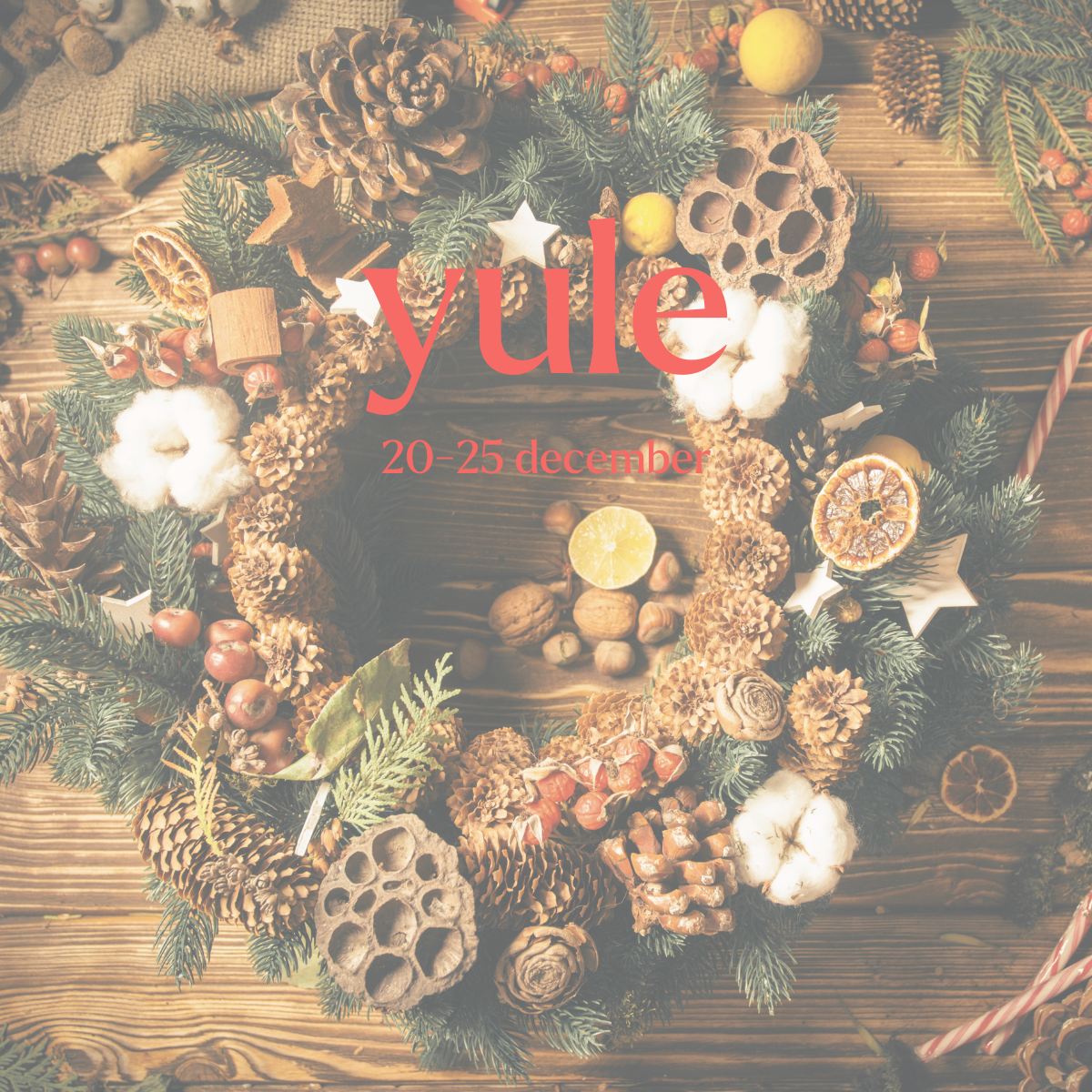


Imbolc
Imbolc is also called St. Brigid’s Day and symbolises the halfway point between the winter solstice and the spring equinox.

Yule
Yule, also known as Yuletide or the Winter Solstice, is a traditional and ancient festival celebrated by various cultures and religions, most notably in Northern Europe. This festivity typically occurs around December 21st in the Northern Hemisphere when the daylight hours are at their shortest and the night is at its longest.
Historically, Yule has deep pagan roots and is closely associated with the winter solstice, marking the moment when the sun begins its gradual return and the days start to lengthen. It holds symbolic significance as a celebration of the rebirth of the sun, warmth, and the triumph of light over darkness. Yule traditions vary among cultures, but common elements include the lighting of candles or a Yule log, feasting, and the exchange of gifts.
In Norse mythology, Yule is connected to the god Odin, who is said to have led the Wild Hunt during this time. The Yule log, often a large and specially selected tree trunk, is ceremonially burned to symbolize the return of light and warmth.
Christianity also incorporated Yule elements into its celebration of Christmas, such as the timing of the holiday and the decoration of evergreen trees with ornaments and lights.
In contemporary times, Yule has experienced a resurgence in popularity among modern pagan and neopagan communities, where it is celebrated with a focus on nature, spirituality, and the cycles of the seasons.
In summary, Yule is a historic and culturally rich festival that celebrates the winter solstice, symbolizing the return of light and the eventual triumph of warmth and life over cold and darkness. It has diverse traditions and continues to hold significance for various cultures and belief systems.


Samhain
Samhain (pronounced "sow-in") is an ancient Celtic festival with profound historical and cultural significance. Derived from the Old Irish word "Samuin," which means "summer's end," Samhain marks the end of the harvest season and the beginning of winter in the Celtic calendar. This festival, which falls on October 31st, is celebrated in various forms across different cultures and has greatly influenced modern Halloween traditions.
Historical Origins: Samhain has its roots in Celtic paganism, specifically among the Gaels in Ireland, Scotland, and the Isle of Man. The Celts believed that on Samhain, the boundary between the physical world and the spirit world was at its thinnest, allowing the spirits of the dead to return to the earthly realm. To honour and appease these spirits, the Celts would hold elaborate rituals and feasts.
Spiritual Significance: Samhain held spiritual importance for the Celts, as it marked a liminal period when time itself seemed suspended. This allowed for reflection on the past year, remembrance of ancestors, and preparation for the challenges of the coming winter. The bonfires lit during Samhain served as a protective measure against malevolent spirits and symbolized the hearth of the community.
Modern Influence: Many aspects of Samhain have survived in modern Halloween customs. For instance, the tradition of dressing up in costumes has its origins in the belief that disguising oneself would protect against vengeful spirits. Additionally, the practice of carving pumpkins into jack-o'-lanterns is reminiscent of the ancient practice of carving turnips to ward off evil spirits.
Contemporary Celebrations: Contemporary celebrations of Samhain often incorporate a blend of Celtic traditions and modern interpretations. Neo-pagan and Wiccan communities may observe Samhain as a spiritual holiday, focusing on themes of reflection, divination, and honouring the dead. Others may simply enjoy Halloween festivities, including costume parties, haunted houses, and trick-or-treating.
Samhain stands as a testament to the enduring power of ancient traditions and their ability to shape modern cultural practices. This Celtic festival, with its rich history and spiritual significance, continues to inspire and influence the way people celebrate the changing of seasons and the mysteries of life and death.
